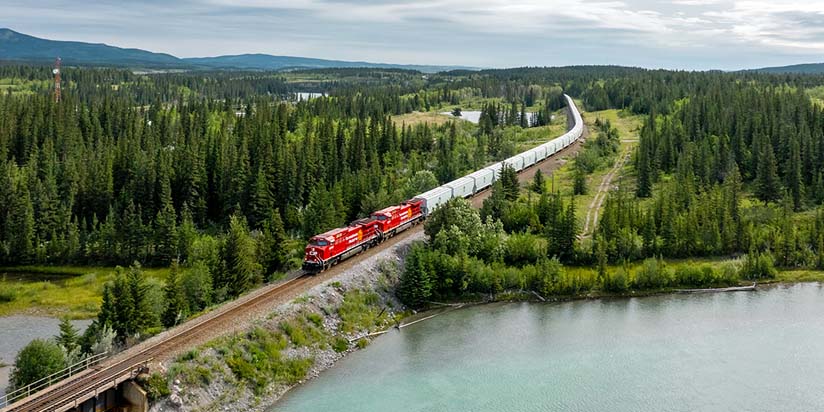

North America - Will Canadian Pacific's (CP) proposed acquisition of Kansas City Southern (KCS) be the spark that ignites the final round
of railroad consolidation in North America?
It's a question that's been coming up since CP and KCS announced their blockbuster US$29 billion deal on 21 Mar 2021.
Most analysts agree that CP/KCS won't lead to the creation of two go-everywhere systems that span the continent.
But there are two schools of thought on the matter.
The first says that combining CP and KCS creates a stable, competitively balanced, North American railroad map, BNSF Railway and Union Pacific in the West,
CSX Transportation and Norfolk Southern in the East, two Canadian systems that reach the Gulf Coast, and in the case of CP, deep into Mexico.
This means that no counter moves are required by the other Class I systems.
And so the creation of CP/KCS will not prompt more mergers.
But the other line of thinking takes exactly the opposite approach.
This balance sets the table for eventual mergers involving the big Eastern and Western U.S. systems and the Canadian railways.
Michael Haverty, who as chief executive out maneuvered Union Pacific and turned KCS into a U.S.-Mexico cross-border system 25 years ago, says no final round
of mergers would be possible with KCS still an independent railroad.
So the CP/KCS combo will, in Haverty's view, lay the groundwork for the merger endgame, although he doesn't believe that will happen in the immediate
future.
That's an intriguing scenario.
And, in typical Haverty fashion, it makes sense.
Could CP/KCS be a Test Case for Mergers?
The plot thickens when you consider a merger hint that BNSF dropped into a letter to federal regulators last week.
But first, some background is in order.
CP and KCS want their deal reviewed under the Surface Transportation Board's old merger rules.
KCS, as the smallest Class I, received a waiver from the STB's much tougher 2001 rules that cover major mergers.
Four of the other five Class I railroads, along with nine shipper associations, have asked the STB to judge the CP/KCS deal under the current merger
rules.
Those rules require, among other things, for the combining railroads to show their deal enhances competition, is in the public interest, and to consider
so-called "downstream effects", such as how the merger might prompt further consolidation in the industry.
This high hurdle has stymied Class I railroad mergers for the past two decades.
The 2001 rules remain untested, as no Class I's have shown up at STB headquarters and plunked down a merger application.
This, BNSF noted in its filing with the STB last week, has created uncertainty regarding how the 2001 merger rules would be applied.
"BNSF believes that as a matter of policy, the public and freight rail stakeholder community would benefit in the future from the guidance gained by the
Board's application of its current standards to this and all future transaction proposals," wrote BNSF Chief Legal Officer Roger Nober, who served as
chairman of the STB from 2002 to 2006.
In other words, BNSF views CP/KCS as something of a test case.
If the STB ultimately approves CP/KCS under the 2001 merger rules, that alone could one day pave the way for megamergers because there would be a blueprint for
how to get a deal through Washington.
Support for Small Deal May Erode with Megamerger
But we're a long way from that right now.
CP/KCS is not in the same league as, say, BNSF/NS.
Shippers, while showing support early on for CP/KCS, may not be in a mood for a railroad whose tracks would reach from Los Angeles and Seattle to New York and
Miami.
And Wall Street analysts expect that any benefits of a merger of two big Class I systems would be entirely offset by onerous conditions regulators would
impose, from open access to expensive environmental mitigation.
For now we'll just have to wait and see how the CP/KCS deal shakes out.
But one thing's clear, mergers expand the reach of a railroad, making it a better competitor with trucks that can go anywhere.
So one day a megamerger, and the final round of consolidation, will give railroads a fighting chance against the truckers who have been eating the industry's
lunch for decades.
Bill Stephens.
(because there was no image with original article)
(usually because it's been seen before)
provisions in Section 29 of the Canadian
Copyright Modernization Act.
